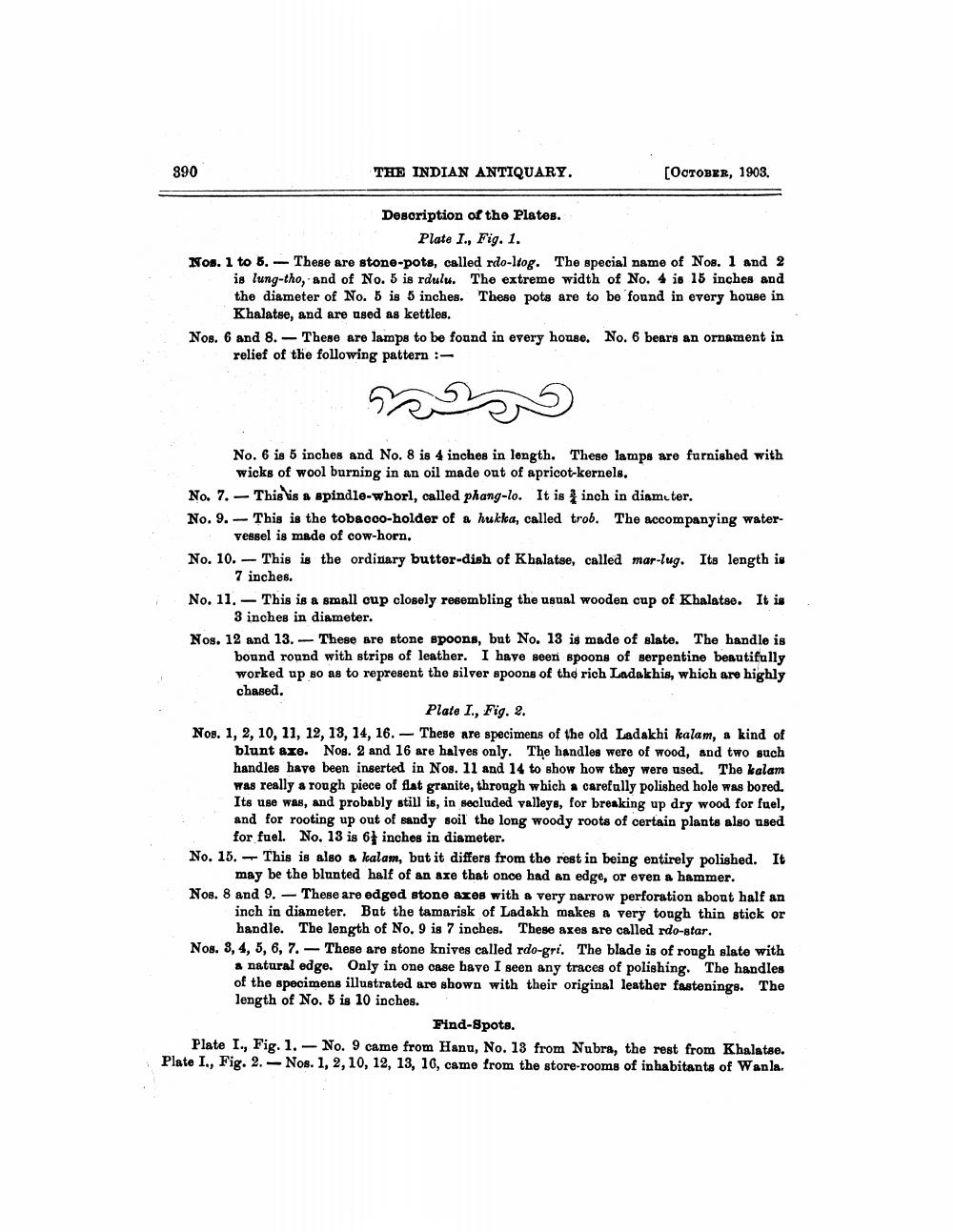________________
890
THE INDIAN ANTIQUARY.
[OCTOBER, 1903.
Description of the Plates.
Plate I., Fig. 1. Nos. 1 to 5. - These are stone-pots, called rdo-ltog. The special name of Nos. 1 and 2
is lung-tho, and of No. 5 is rdulu. The extreme width of No. 4 is 15 inches and the diameter of No. 5 is 5 inches. These pots are to be found in every house in
Khalatse, and are aged as kettles. Nos. 6 and 8. - These are lamps to be found in every house. No. 6 bears an ornament in
relief of the following pattern :--
No. 6 is 5 inches and No. 8 is 4 inches in length. These lamps are furnished with
wicks of wool burning in an oil made out of apricot-kernels. No. 7. - This is a spindle-whorl, called phang-lo. It is inch in diameter. No. 9. - This is the tobacco-holder of a hukka, called trob. The accompanying water
vessel is made of cow-horn, No. 10. - This is the ordinary butter-dish of Kbalatse, called mar-lug. Its length is
7 inches. No. 11. - This is a small cup closely resembling the usual wooden cup of Khalatse. It is
3 inches in diameter. Nos. 12 and 13. These are stone spoons, but No. 13 is made of slate. The handle is
bound round with strips of leather. I have seen spoons of serpentine beautifully worked up so as to represent the silver spoons of the rich Ladakhis, which are highly chased.
Plate I., Fig. 2. Nos. 1, 2, 10, 11, 12, 13, 14, 16. - These are specimens of the old Ladakhi kalam, a kind of
blunt axe. Nog. 2 and 16 are halves only. The handles were of wood, and two such handles have been inserted in Nos. 11 and 14 to show how they were used. The kalam was really a rough piece of flat granite, through which a carefully polished hole was bored. Its use was, and probably still is, in secluded valleys, for breaking up dry wood for fuel, and for rooting up out of sandy soil the long woody roots of certain plants also used
for fuel. No. 13 is 6 inches in diameter. No. 15. - This is also a kalam, but it differs from the rest in being entirely polished. It
may be the blunted half of an axe that once had an edge, or even a hammer. Nos. 8 and 9.- These are edged stone axes with a very narrow perforation about half an
inch in diameter. But the tamarisk of Ladakh makes a very tough thin stick or
handle. The length of No. 9 is 7 inches. These axes are called rdo-star. Nos. 3, 4, 5, 6, 7.- These are stone knives called rdo-gri. The blade is of rough slate with
a natural edge. Only in one case have I seen any traces of polishing. The handles of the specimens illustrated are shown with their original leather fastenings. The length of No. 5 is 10 inches.
Find-Spots. Plate I., Fig. 1. - No. 9 came from Hanu, No. 13 from Nubra, the rest from Khalatee. Plate I., Fig. 2.- Nos. 1, 2, 10, 12, 13, 16, came from the store-rooms of inhabitants of Wanla.




